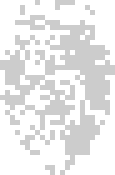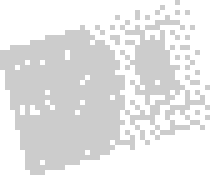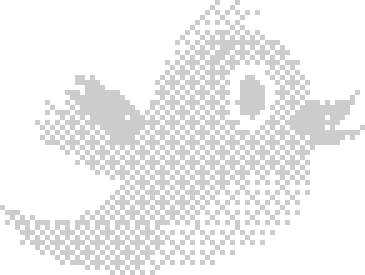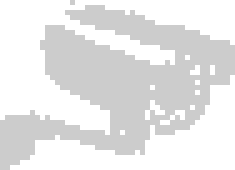algorithme
analyse
CADATHON - 8 mars 2021
Les dispositifs de surveillance sont nombreux et déployés de manière très opaque. La demande CADA est un outil permettant – théoriquement – d’avoir accès à des informations les concernant. Sauf que régulièrement, les administrations ne répondent pas ou à moitié, sous prétexte de « secret commercial ». Afin de lutter contre la (...)
analyse
Passeport sanitaire, à la mode chinoise | Making-of - 7 mars 2021
Pékin - C’est le rituel dont en Chine il est désormais difficile de s’affranchir : scanner un code-barres avec son téléphone et montrer patte blanche, avec une appli qui délivre un laissez-passer “vert”, synonyme de bonne santé.
A l’entrée d’un immeuble, d’un commerce ou d’un parc ; pour prendre l’avion, le train ou un taxi ; (...)
analyse
Le Longshot, nouveau drone chasseur d’avions de l’US Air Force - 7 mars 2021
Le Longshot est un drone autonome qui sera lancé depuis un avion de chasse en plein combat. Transportant lui-même ses missiles, il pourra affronter les appareils ennemis à la place du pilote.
Ne pas affronter un avion de chasse ennemi mais lui envoyer un drone qui le fera à la place du pilote. C’est le nouveau (...)
analyse
Un nouveau drone-kamikaze russe ’silencieux’ bientôt mis en service - 7 mars 2021
Fabriqué par le groupe de défense russe Kalashnikov, le drone KYB peut transporter une charge explosive allant jusqu’à 3kg.
Si des armées s’évertuent à trouver le meilleur moyen de se défendre face aux drones, d’autres travaillent à en développer de plus efficaces. Le 22 février, le groupe de défense Kalashnikov, sous (...)
analyse
Verizon’s NFL Covid-19 Screening Cameras Are Based on Bad Science - 6 mars 2021
Verizon’s 5G-powered fever-detecting cameras appear to be sourced from a company under State Department sanctions and probably don’t work.
Technology companies have spent the past year in a manic sprint to reimagine (or at least re-market) their wares as coronavirus response tools, with often less than stellar (...)
analyse
‘They track every move’ : how US parole apps created digital prisoners - 5 mars 2021
Is smartphone tracking a less intrusive reward for good behaviour or just a way to enrich the incarceration industry ?
In 2018, William Frederick Keck III pleaded guilty in a court in Manassas, Virginia, to possession with intent to distribute cannabis. He served three months in prison, then began a three-year (...)
analyse
Affectiva raises $14 million to bring apps, robots emotional intelligence - 5 mars 2021
Affectiva, a startup developing “emotion recognition technology” that can read people’s moods from their facial expressions captured in digital videos, raised $14 million in a Series D round of funding led by Fenox Venture Capital.
According to co-founder Rana el Kaliouby, the Waltham, Mass.-based company wants its (...)
analyse
Facebook Scraped 1 Billion Pictures From Instagram to Train Its A.I. — But Spared European Users - 5 mars 2021
The team purposely excluded Instagram images from the European Union, likely because of GDPR
Facebook researchers announced a breakthrough yesterday : They have trained a “self-supervised” algorithm using 1 billion Instagram images, proving that the algorithm doesn’t need human-labeled images to learn to accurately (...)
analyse
China’s ‘Sharp Eyes’ Program Aims to Surveil 100% of Public Space - 5 mars 2021
The program turns neighbors into agents of the surveillance state
One of China’s largest and most pervasive surveillance networks got its start in a small county about seven hours north of Shanghai.
In 2013, the local government in Pingyi County began installing tens of thousands of security cameras across urban (...)
analyse
ByteDance, le nouvel ogre de l’Internet en Chine, ne cesse de grossir - 4 mars 2021
Le propriétaire de TikTok a embauché 40 000 employés en 2020 et pourrait faire de l’ombre aux deux géants chinois Alibaba et Tencent.
ByteDance ne s’arrête pas : après 40 000 embauches en 2020, l’entreprise qui détient TikTok vient d’annoncer 13 000 créations de postes pour sa section éducation. Un appétit impressionnant (...)
analyse
Making sense of algorithms : Relational perception of contact tracing and risk assessment during COVID-19 - 4 mars 2021
Governments and citizens of nearly every nation have been compelled to respond to COVID-19. Many measures have been adopted, including contact tracing and risk assessment algorithms, whereby citizen whereabouts are monitored to trace contact with other infectious individuals in order to generate a risk status via (...)
analyse
Origen étnico, sexo o vestimenta : el polémico sistema de Renfe para vigilar a sus viajeros - 4 mars 2021
La compañía publica un anuncio de licitación para el desarrollo de un ’software’ de análisis de vídeo que pretende implementar en 25 estaciones de Madrid, Cataluña, Valencia, País Vasco y Málaga
Mientras usted deambula por el andén esperando el próximo tren, esa cámara de seguridad a la que nunca presta atención ha podido (...)
analyse
Quand l’administration fiscale peut vous surveiller sur les réseaux sociaux - 3 mars 2021
Un décret vient d’être publié qui autorise les services fiscaux à exploiter les données publiées sur Facebook, Twitter, Instagram, LinkedIn… ou sur les plates-formes de vente en ligne.
Depuis 2017, Bercy utilise un outil automatisé de ciblage pour les contrôles fiscaux des particuliers, dénommé « ciblage de la fraude et (...)
analyse
« Il nous faut retrouver une forme d’hygiène numérique » - 3 mars 2021
Quelles traces numériques laissons-nous au quotidien ?
Elles sont de plus en plus nombreuses. L’image d’Épinal de ces « traces » renvoie surtout au profil que l’on se construit sur un réseau social. On y renseigne son nom, son état civil, son âge, sa profession, ses goûts… Mais ces données personnelles ne constituent que (...)
analyse
Smile for the camera : the dark side of China’s emotion-recognition tech - 3 mars 2021
Xi Jinping wants ‘positive energy’ but critics say the surveillance tools’ racial bias and monitoring for anger or sadness should be banned
Ordinary people here in China aren’t happy about this technology but they have no choice. If the police say there have to be cameras in a community, people will just have to live (...)
analyse
Automated racism : How tech can entrench bias - 2 mars 2021
Dutch benefits scandal highlights need for EU scrutiny.
In the run-up to parliamentary elections in the Netherlands this month, center-right and extreme right parties are outdoing one another in calling for a surveillance state that will come down on marginalized and minority groups in all its might.
This should (...)
analyse
Objective or Biased - 2 mars 2021
On the questionable use of Artificial Intelligence for job applications
Software programs promise to identify the personality traits of job candidates based on short videos. With the help of Artificial Intelligence (AI) they are supposed to make the selection process of candidates more objective and faster.
An (...)
analyse
Facial recognition tech stories and rights harms from around the world - 2 mars 2021
From Delhi to Detroit, Budapest to Bogota, Facial Recognition Technology (FRT) is being rapidly deployed in public and private spaces across the world.
As of 2019, 64 out of 176 countries were using facial recognition surveillance systems. In the US alone, more than 50 percent of all American adults were in a (...)
analyse
Police Drones Are Starting to Think for Themselves - 1er mars 2021
In one Southern California city, flying drones with artificial intelligence are aiding investigations while presenting new civil rights questions.
CHULA VISTA, Calif. — When the Chula Vista police receive a 911 call, they can dispatch a flying drone with the press of a button.
On a recent afternoon, from a (...)
analyse
Le boom des algorithmes de recrutement et la difficulté de les évaluer - 1er mars 2021
Près de 40 % des services RH utiliseraient des algorithmes prédictifs. La bonne nouvelle c’est qu’ils commencent à être audités. La mauvaise est qu’il reste complexe de mesurer leur prétendue objectivité.
Demander à un candidat de gonfler des ballons sur un jeu vidéo pour vérifier ses compétences. L’idée peut paraître (...)












































































































